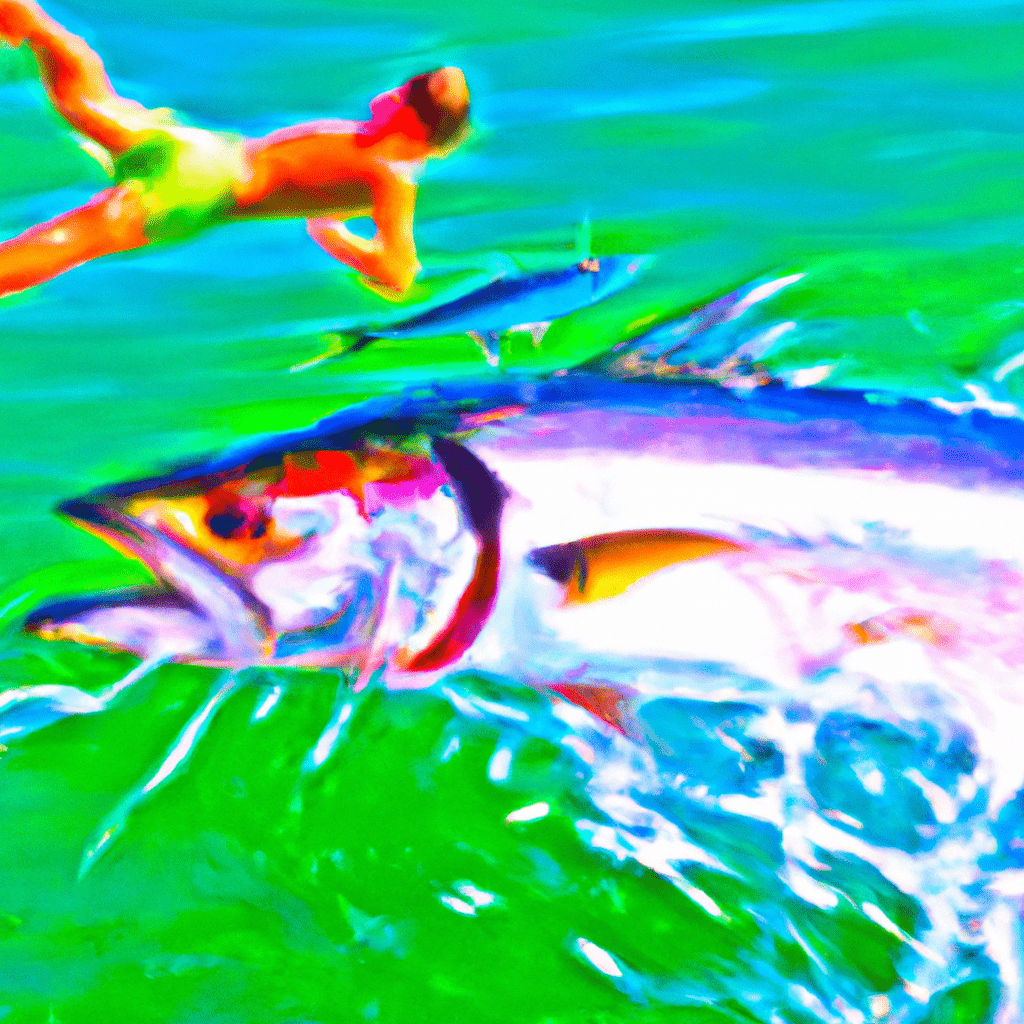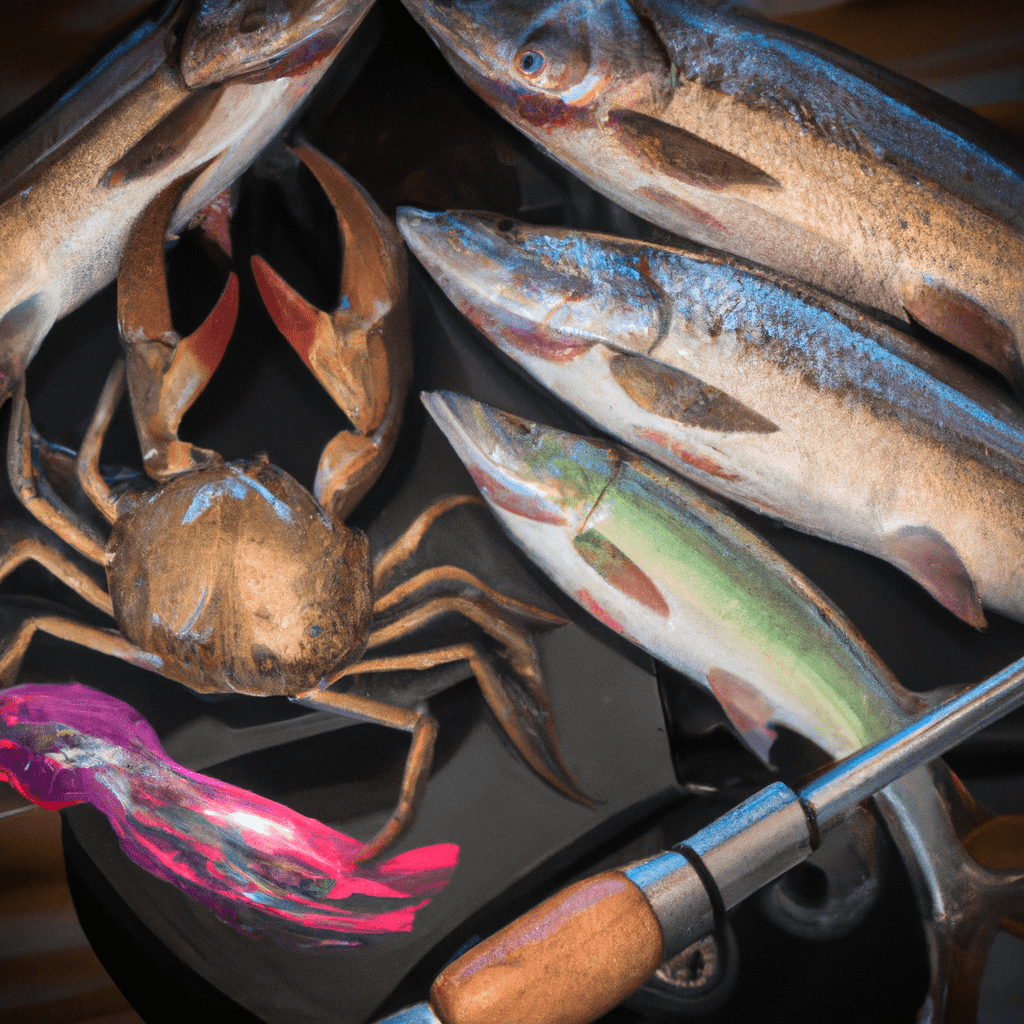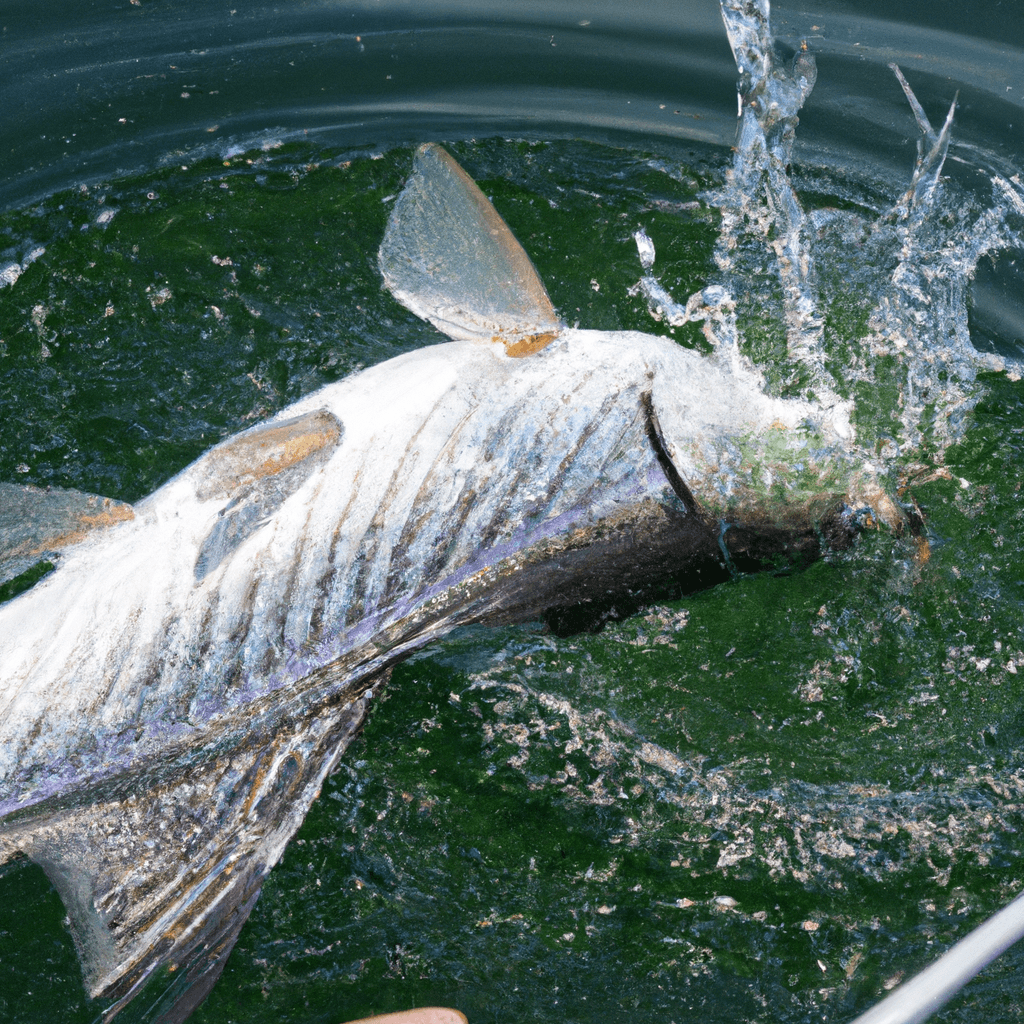Imagine yourself standing on the edge of a shimmering, crystal-clear waterway, your heart pounding with anticipation. You’re about to embark on a thrilling adventure, armed with the knowledge of how to effectively utilize natural baits for tarpon.
In this article, we will delve into the world of tarpon fishing, exploring the best live bait options and techniques that will help you entice these majestic creatures.
Get ready to enhance your angling skills and reel in your biggest tarpon catch yet.
The Best Live Bait Options for Tarpon

You’ll find that the best live bait options for tarpon include mullet, crabs, and shrimp. When it comes to using artificial lures for tarpon, nothing beats the effectiveness of these natural baits. Tarpon are known for their voracious appetite, and these bait options perfectly mimic their natural prey, making them irresistible to these silver kings.
Mullet, a popular choice among anglers, is a highly versatile bait. Its long, slender body and shimmering scales mimic the appearance of small fish, attracting tarpon from a distance.
Crabs, on the other hand, provide a more subtle presentation. Their slow, deliberate movements and enticing scent make them ideal for targeting tarpon in shallower waters.
Shrimp, although small in size, pack a punch when it comes to attracting tarpon. Their strong odor and vibrant color make them an irresistible treat for these powerful predators.
Whether you choose live or dead bait, proper presentation techniques are crucial. Ensuring that the bait is lively and natural-looking will increase your chances of enticing a tarpon to strike.
Mastering the Art of Using Crabs as Tarpon Bait

When targeting tarpon, a key technique is using crabs as bait, as they offer a subtle presentation and enticing scent that can be irresistible to these powerful predators. Crabs have long been recognized as a highly effective bait for tarpon fishing due to their natural appeal and ability to mimic their natural prey.
Here are some crab baiting techniques to help you master the art of using crabs as tarpon bait:
- Choosing the Right Crab: Opt for live crabs that are large enough to attract tarpon but still agile and active.
- Hook Placement: Insert the hook through the crab’s back, just behind the rear swimming legs, allowing for a natural and realistic presentation.
- Ensuring Natural Movement: Allow the crab to move freely in the water by attaching it to the hook using a rubber band or through the leg sockets.
- Presenting in the Strike Zone: Cast the crab near structures, channels, or areas where tarpon are likely to be feeding or resting.
- Observing and Adjusting: Pay attention to the behavior of tarpon and adjust your crab baiting techniques accordingly to increase your chances of success.
Using crabs as tarpon bait offers several benefits:
- Realism: Crabs closely resemble the natural prey of tarpon, increasing the likelihood of a strike.
- Scent: Crabs emit a distinct odor that can attract tarpon from a distance.
- Subtlety: The slow and natural movements of crabs make them an enticing target for tarpon, especially in calm waters.
- Durability: Crabs are hardy baits that can withstand the powerful strikes and vigorous fights of tarpon.
- Versatility: Crabs can be used in various fishing scenarios, from flats fishing to deep-sea excursions.
Mastering the art of using crabs as tarpon bait requires practice, attention to detail, and understanding the behavior of these powerful predators. With the right techniques and a little patience, you can increase your chances of landing that trophy tarpon.
Effective Techniques for Using Mullet as Tarpon Bait

To effectively use mullet as tarpon bait, try incorporating different presentation techniques to entice these powerful fish. Mullet is a popular bait choice for targeting tarpon due to its natural appeal and availability in many fishing areas. When rigging mullet, it is important to use specialized techniques to maximize its effectiveness. One common rigging method is the “mullet on a circle hook” technique, where the hook is inserted through the upper lip and out the nostrils. This allows for a natural swimming action and prevents the mullet from tearing apart easily. Another technique is the “mullet on a jighead” method, where a jighead is attached to the mullet’s head to create a lifelike motion. By experimenting with these alternative bait choices and specialized rigging techniques, you can increase your chances of successfully catching tarpon.
| Technique | Method | Benefits |
|---|---|---|
| Circle Hook | Insert through upper lip, nostrils | Natural swimming action |
| Jighead | Attach to mullet’s head | Lifelike motion |
Remember to always check your local fishing regulations and restrictions before using mullet as bait for tarpon.
Natural Baits That Mimic Tarpon’s Prey

Surely, if you want to increase your chances of attracting tarpon, try using natural baits that mimic their prey and incorporate different presentation techniques to entice these powerful fish.
Tarpon are known to feed on a variety of prey including mullet, crabs, shrimp, and small fish. To imitate their prey effectively, you can use imitation lures that resemble these natural baitfish. These lures are designed to mimic the movement and appearance of live bait, making them highly effective in fooling tarpon into striking.
Additionally, fishing with live shrimp is another popular method as tarpon are known to be fond of shrimp. The live shrimp can be rigged on a hook and presented in a natural and enticing manner.
Tips for Presenting Natural Baits to Tarpon Effectively

If you want to maximize your chances of successfully presenting natural baits to tarpon, it’s important to consider the timing and location of your casts.
Mastering bait presentation techniques requires a deep understanding of tarpon feeding habits and behavior. Tarpon are known to feed primarily on small fish, crustaceans, and shrimp, so it’s crucial to mimic their natural prey when presenting baits.
When casting, it’s recommended to position yourself upwind or upcurrent of the tarpon to ensure that the scent of the bait reaches them. Timing is also crucial, as tarpon tend to be more active during certain times of the day, such as early morning or evening.
Additionally, paying attention to the tide and current patterns can help you determine the best time and location to present your natural baits effectively.
Frequently Asked Questions
What Is the Average Size of Tarpon That Can Be Caught Using Natural Baits?
You can catch tarpon of varying sizes while using natural baits for tarpon fishing. The average size of tarpon caught using natural baits can range from X to Y pounds.
Can Tarpon Be Caught Using Artificial Lures Instead of Natural Baits?
You can catch tarpon using artificial lures, but there are pros and cons. Lures can be more versatile and mimic different prey, but natural baits may attract unwanted species. Consider these factors before deciding.
Are There Any Specific Times of the Day or Year That Are Better for Using Natural Baits for Tarpon Fishing?
The best times for tarpon fishing and tips for effectively using natural baits can vary depending on factors like tides, water temperature, and prey availability. Understanding these factors can increase your chances of success.
How Should Natural Baits Be Rigged for Tarpon Fishing?
To effectively rig natural baits for tarpon fishing, consider using the following techniques: use a circle hook for better hook sets, attach the bait securely to prevent it from falling off, and choose live or cut bait as the best bait choices.
Are There Any Specific Locations or Habitats Where Tarpon Tend to Be More Receptive to Natural Baits?
When tarpon fishing, you may wonder where they are most receptive to natural baits. While there isn’t a definitive answer, tarpon tend to be more receptive in specific locations such as deep channels or around bridges.

